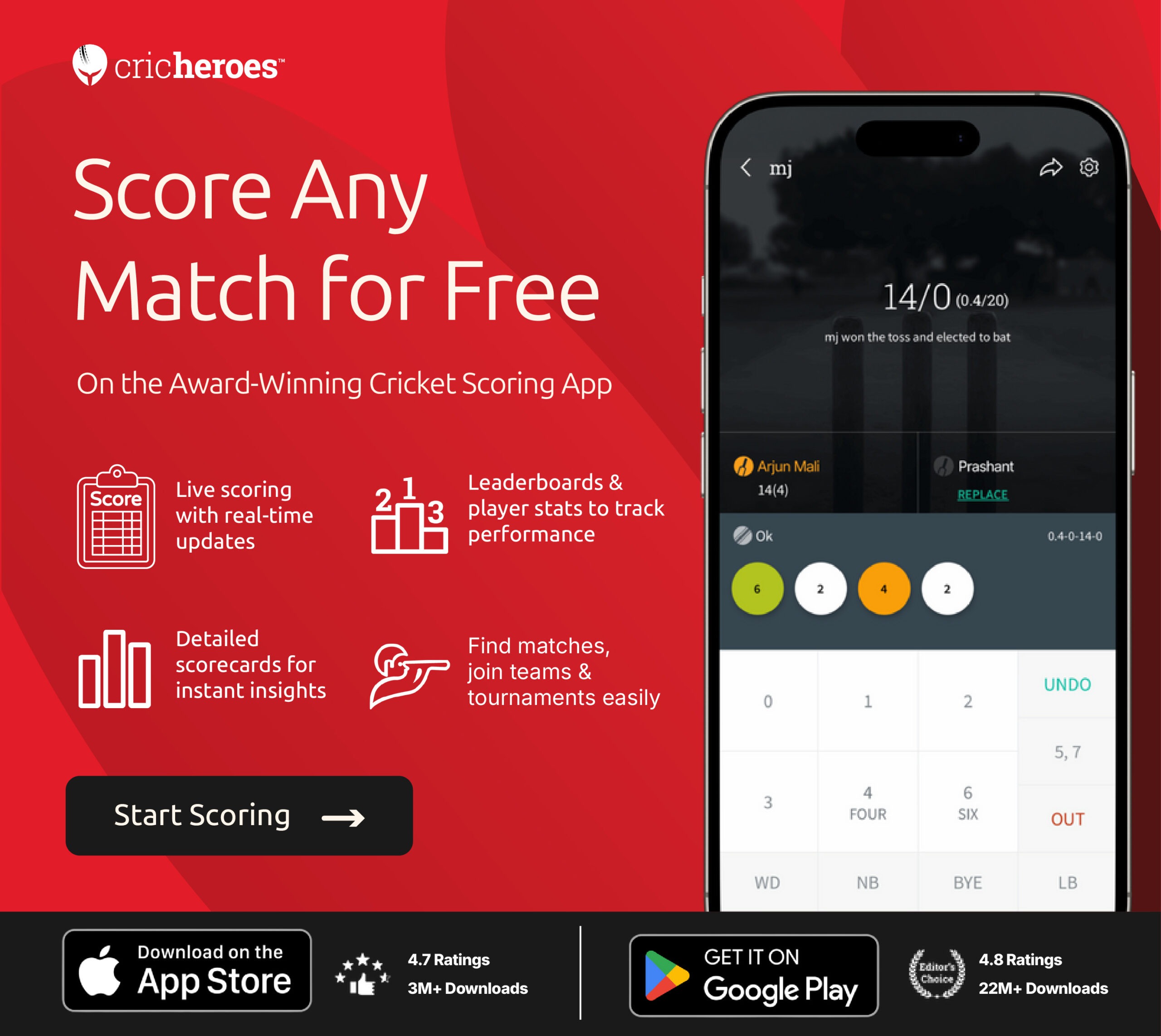Watching cricket but confused by the lines on the pitch? You’re not alone. Many fans — especially beginners — struggle to understand what the popping crease or bowling crease actually does. And let’s be honest, most explanations online feel too technical or just skip over the basics. If you’re a casual viewer, a young player, or just someone trying to learn the game, this can get frustrating fast.
That’s why this guide breaks it all down in simple terms. You’ll learn how many creases are there in cricket, what each one means, and how they’re used during a match. This guide will break down the different types of creases in cricket, what they mean, and how they impact the game. No jargon, no confusion — just clear answers that make the game easier to follow.
What Is a Crease in Cricket?
A crease in cricket is a painted white line on the pitch that acts as a boundary for certain player actions. It’s not just a line for decoration — it helps define safe zones for the batter, legal zones for the bowler, and visual cues for umpires.
Think of it like a finish line or a safety line. For batters, being inside the popping crease means they’re not at risk of getting run out. For bowlers, staying behind the bowling crease means they’re delivering the ball legally.
In short, the crease gives structure to the pitch — and helps everyone on the field know what’s in play and what’s not.
How Many Creases Are There in Cricket?
There are eight creases on a standard cricket pitch. While that number might sound like a lot, it becomes simple once you understand that these are just three main types of lines, repeated at both ends of the pitch.
Here’s a quick breakdown:
- 2 Popping Creases (1 at each end)
- 2 Bowling Creases (1 at each end)
- 4 Return Creases (2 at each end)
Cricket Q&A
Five quick questions. Get a personal tip.
So, in total:
3 types × both ends = 8 creases
Each of these creases serves a specific purpose — for batting, bowling, and fielding. Without them, the rules of the game wouldn’t work the way they do. Whether it’s checking if a batter is safe or if a bowler delivered the ball legally, these lines make the difference.
If you’re just starting out with cricket or want to brush up on pitch layout, you might also like this guide on the meaning of stumps in cricket — a helpful companion to understanding creases.
Types of Creases in Cricket
Now that you know there are eight creases in total, let’s break them down into the three main types used in every cricket match. Each crease has a clear role in the game — from marking where the bowler delivers the ball to showing where the batter needs to be safe.
Here are the three types:
- Popping Crease
- Bowling Crease
- Return Crease
Each one is used differently, but together, they help control movement and fairness on the field. Let’s take a closer look at each one, starting with the popping crease — the line that can decide whether a batter stays or walks back to the pavilion.
Popping Crease in Cricket
The popping crease is one of the most important lines on the pitch. It’s the line a batter must reach to be safe from being run out or stumped.
Here’s what you need to know:
- It’s drawn 4 feet (1.22 meters) in front of the stumps.
- It runs parallel to the bowling crease.
- It is used by umpires to judge run-outs and stumpings.
- A batter must have some part of their body or bat grounded behind this line to be considered “in.”
Think of the popping crease as a safety line — once a batter crosses it, they’re safe (as long as they stay grounded). If they don’t make it in time, fielders can remove the bails and get them out.
Bowlers also use the popping crease. If a bowler oversteps it while delivering the ball, it’s called a no-ball, which gives the batting team an extra run and sometimes a free hit.
Bowling Crease in Cricket
The bowling crease is the line on which the stumps are placed. It’s where the bowler delivers the ball from.
Here’s what it does:
- It runs perpendicular to the pitch.
- It is 8 feet 8 inches (2.64 meters) long.
- It forms the base for stump placement at both ends.
- A bowler must not step over the front edge of the bowling crease during delivery.
If the bowler’s front foot crosses this line, it’s an illegal delivery and results in a no-ball. That’s why bowlers often train carefully to land their foot just behind or on the line.
Though it looks simple, this crease is where some of the most tense moments in a match happen — especially during tight over calls, last-ball finishes, and no-ball appeals.
Return Crease in Cricket
The return crease is often the most overlooked, but it plays a major role for bowlers. Unlike the popping and bowling creases, the return crease runs vertically (up and down) the pitch.
Here’s what it does:
- There are two return creases on each end (four total).
- They run perpendicular to the bowling crease, one on each side of the stumps.
- A bowler’s back foot must land inside the return creases while delivering the ball.
- If the bowler’s back foot touches or lands outside the line, it’s considered a no-ball.
The return crease is important because it keeps the bowler within a legal delivery zone. It also prevents the bowler from bowling from too wide an angle, which could give them an unfair advantage.
This is one of the many small details that umpires constantly watch during play — especially in tight matches where every ball counts.
Visual Breakdown of All Creases
To make things easier, here’s a clear breakdown of where all the creases are on the pitch:
| Crease Type | Position | Main Use |
| Popping Crease | 4 feet in front of stumps | Determines if batter is safe or run out |
| Bowling Crease | Under the stumps (horizontal) | Marks legal delivery line for bowlers |
| Return Crease | Vertical lines on either side | Controls bowler’s back foot movement |
There are a total of 8 creases:
- 2 Popping Creases
- 2 Bowling Creases
- 4 Return Creases (2 on each end)
How Each Crease Impacts the Game
Understanding creases isn’t just for the rulebook — it can actually change the outcome of a match. Here’s how:
Batters:
- Staying behind the popping crease keeps them safe from being run out.
- During stumpings, it’s the line that decides if they’re out or not.
- When running between wickets, every inch behind the crease matters.
Bowlers:
- Must keep their front foot behind the popping crease during delivery.
- Back foot must stay inside the return crease.
- Violating either results in a no-ball — which can shift momentum fast.
Umpires:
- Creases provide clear reference points for decisions.
- Help determine run-outs, no-balls, stumpings, and legal deliveries.
In professional cricket, mistakes around the crease can lead to game-changing moments. Many close wins or losses have come down to just one foot being outside the line.
Want to improve your understanding of batting and field positioning too? Don’t miss this blog on mastering fielding positions — it’s a great next step for learners.
Real-Life Examples of Crease Decisions
Crease-related calls are often some of the most dramatic moments in cricket. A single inch can mean the difference between victory and defeat. Here are a few unforgettable examples where creases played a key role:
1. MS Dhoni’s Lightning Run-Out of Ross Taylor (2016)
In a T20 match between India and New Zealand, Ross Taylor was just inches away from making his ground. But Dhoni, with his trademark speed, broke the stumps before Taylor’s bat could cross the popping crease. It was a perfect example of why batters need to stay alert around the crease.
2. Ben Stokes Overstepping in a Test Match
Even the best bowlers can get caught out. In a crucial Test match, Ben Stokes bowled what looked like a wicket-taking ball. But it was called a no-ball because his front foot had slightly crossed the popping crease. The wicket was overturned, and momentum shifted.
3. World Cup 2019 Final – Every Inch Mattered
During the final between England and New Zealand, tight run-outs and crease awareness ultimately made the difference in one of the most dramatic finishes ever. As a result, umpires had to rely on frame-by-frame reviews to determine whether the batters had made it behind the line. Consequently, every inch of the crease became crucial in deciding the outcome.
These moments show just how much the creases influence real outcomes — not just rules on paper.
Conclusion
Understanding cricket creases might seem minor, but they play a major role in how the game is played and judged. From helping umpires make tight decisions to guiding where players can move, these simple white lines are part of what makes cricket such a strategic sport.
To quickly recap:
- There are 8 creases in total on the pitch.
- There are three types of creases: popping, bowling, and return.
- Each one plays a key role in either batting, bowling, or umpiring decisions.
Whether you’re watching with friends, starting to play, or simply trying to follow the rules more closely, understanding how creases work can significantly enhance your enjoyment of the game.
Have questions? Curious about other cricket rules? Drop a comment below or share this guide with someone who needs a crash course in cricket basics!
FAQs
How many creases are there in cricket?
There are eight creases on the field—four at each end of the pitch.
What is the popping crease used for?
It’s the line that decides run-outs, stumpings, and no-balls.
Where is the bowling crease located?
Right under the stumps—used to mark bowler foot placement.
Why does the bowler stay behind the line?
To avoid front foot no-balls, which give the batter a free hit.
Can a batsman be safe if the bat is on the crease?
No. The bat must be inside or touching the ground behind the line.
How wide is the return crease?
The two return creases are 8 feet 8 inches apart.
What happens if a bowler crosses the return crease?
It’s a no-ball. The delivery becomes illegal.
Do crease rules change in T20s or Tests?
No. The crease rules are the same across all formats.
Do they paint the creases before every match?
Yes. Groundsmen re-mark creases before every game for clarity.
How do umpires check no-balls at the crease?
They use their eyes first, then check replays if needed for big calls.
Important Articles

I am Manan Joshi , SEO All-Rounder at CricHeroes.
CricHeroes is the ultimate Cricket Scoring App and the world’s only true Cricket Network. With more than 4 crore+ registered cricketers using CricHeroes to Live Cricket Scores for their local cricket matches and tournaments, CricHeroes is already the #1 Cricket Scoring App Globally!
We also proudly present “CricHeroes Store” by CricHeroes, a dedicated shop for cricket apparel and accessories, helping players gear up for their game.















